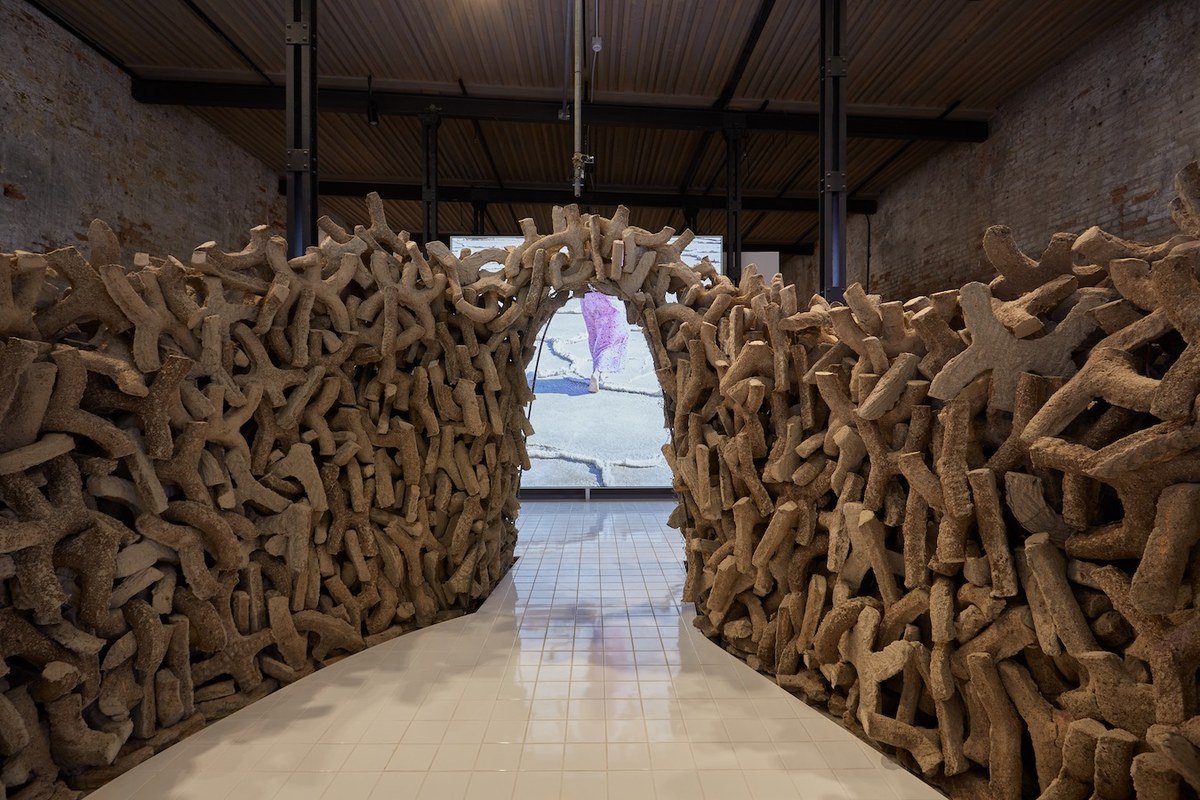Lifestyle
6.11.2021
United Arab Emirates: Venice pavilion explores sustainable building practices

This year’s Venice Biennale takes as its theme “How are we going to live together?”, a topic that resonates deeply as the COVID-19 pandemic continues… To address this, the United Arab Emirates has set itself a new challenge for its seventh participation in the event: exploring sustainable building practices!
Reusing sea salt as a local building material
To answer this question, the curators of the UAE pavilion – architects Wael Al-Awar and Kenichi Teramoto – present their project “Wetlands”, a structure that explores sea salt as a locally sourced building material.
See also
Lebanese Canadian architect Samir Nicolas Saddi embarks on the reconstruction of the Arab world
Standing 2.7 meters high and with a base of 7 x 5 meters, the structure provides an interior space that visitors can easily enter. It is made from brine from industrial desalination processes, a resource abundant in the UAE, and has the strength and durability to be used in modern architecture.
Towards sustainable alternatives to cement
The cement industry is currently estimated to be responsible for 8% of all greenhouse gas emissions.
“As architects, we have a responsibility to challenge the harmful practices of the construction industry and seek more sustainable alternatives” said architect Al-Awar. “The alternative to cement we propose would mitigate a harmful environmental problem. Our research has allowed us to develop a proof of concept showing that locally sourced salt-based cement is a viable and scalable alternative.”

Seventh participation for the United Arab Emirates
This is now the seventh time the UAE has participated in the Venice Architecture Biennale, each time offering innovative modern structures that draw on the country’s architectural heritage and desert landscape.
The first UAE pavilion in 2014 – “Lest We Forget: Structures of Memory in the UAE,” curated by Dr. Michèle Bambling, examined how public and residential architecture has shaped the country.
“Transformations: The Emirati National House” in 2016, meanwhile, explored the transformative aspect of the housing model of Emirati national houses known as sha’abi (folk) houses.
“The pandemic has demonstrated how vital it is for people to engage with issues such as climate change through art and culture” said Laila Binbrek, coordinating director of the UAE pavilion.
And, as Al-Awar points out, there has been a creative and philosophical shift because of the pandemic. “We have inevitably seen a shift in creative production in a world with limited access to physical space and travel” he explains. “However, it has also pushed us to open up new dialogues and approach our work more creatively, with a focus on impact, not process.”
popular

